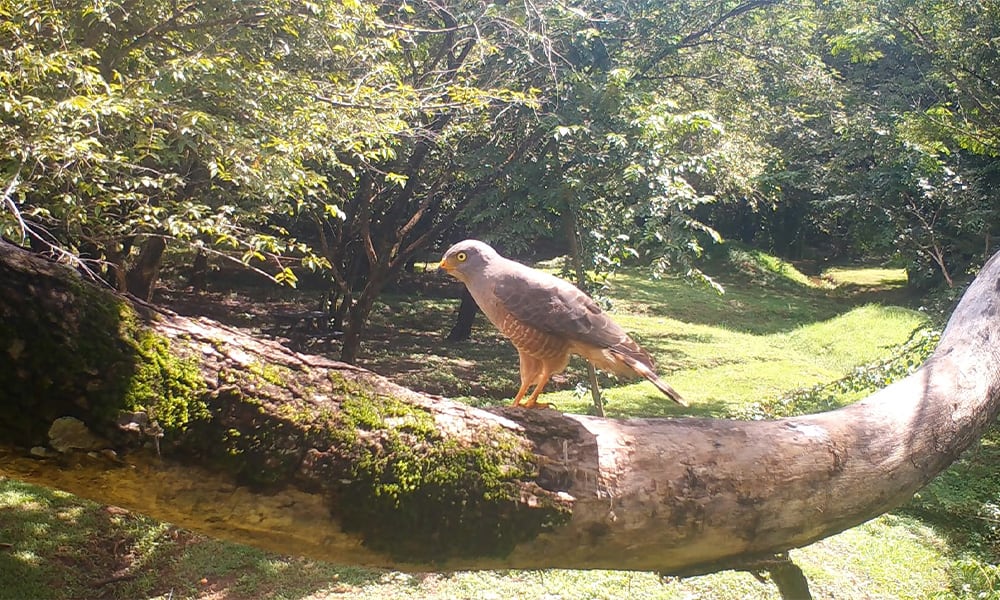Some birds win the name game while others are saddled with less impressive monikers. The magnificent frigate bird and the resplendent quetzal are obvious winners. Those birds clearly have something special going on. The roadside hawk on the other hand, sounds a little more pedestrian (See what I did there?). That doesn’t mean it has any less value than it’s more impressively named kin. So let’s agree to secretly call it the majestic roadside hawk and learn a little more about this bird’s role in Costa Rica’s ecological dance.
Let’s start by diving a little deeper into the names. The roadside hawk (Rupornis magnirostris or Buteo magnirostris) has a couple of common names in Spanish, gavilán chapulinero and gavilán pollero. You’ll find gavilán peppered throughout your Costa Rica bird book because it’s Spanish for hawk. The first name, gavilán chapulinero, refers to part of this little hawk’s diet.
They’re big fans of eating large insects like grasshoppers, which have several names in Tico Spanish including chapulines. The second name is more of a problem because there’s another hawk, which looks extremely similar to the roadside hawk, the broad-winged hawk, which is also known as the gavilán pollero. To avoid confusion and because I like the way chapulinero sounds when you say it, I stick with the first name.
The roadside hawk is on the small side. Adults are about 15 inches long and weigh a little over half a pound. Their color scheme isn’t impressive sounding when typed out. They have gray heads, brownish-gray wings, and their bellies are white with brown stripes. They have bright yellow feet and a sharp little curved beak that starts out yellow and turns black towards the tip.
The part that always stands out to me when I record a nice clear video on my camera traps are their eyes. They’re perfect bright yellow circles with dark black pupils. Their vivid yellow eyes stand out beautifully from the background of their light gray heads.
Roadside hawks are common and found throughout most of Costa Rica. They prefer savannas, secondary growth forests, broken woodlands, and edges of agricultural fields. You’ll often spot them perched on a fence post or, get this, on a telephone pole on the side of the road. They don’t do a lot of soaring around looking for prey. They sit on their perches and wait to pounce on small creatures like the aforementioned grasshoppers, reptiles, small mammals, or, rarely, small birds.
They nest during dry season, making a small platform of sticks in a tree in an open area or on the edge of a forest. They lay a clutch of one or two eggs which is incubated for around 37 days.
Take moment a think about what a hawk call sounds like. That’s exactly what roadside hawks sound like. It’s a shrill, raspy, harsh sounding hawk-scream.
I see roadside hawks frequently in the wild both while checking camera traps and while driving my little family around Costa Rica. I record them with my camera traps when I scoot myself into the lower branches of a tree that’s on the edge of an open area, just like the literature says, or when they dive down to the ground to pounce on prey. Take a look at the video below and get to know the (majestic) roadside hawk.
About the Author
Vincent Losasso, founder of Guanacaste Wildlife Monitoring, is a biologist who works with camera traps throughout Costa Rica. Learn more about his projects on facebook or instagram. You can also email him at: vincent@guanacastewildlifemonitoring.com







